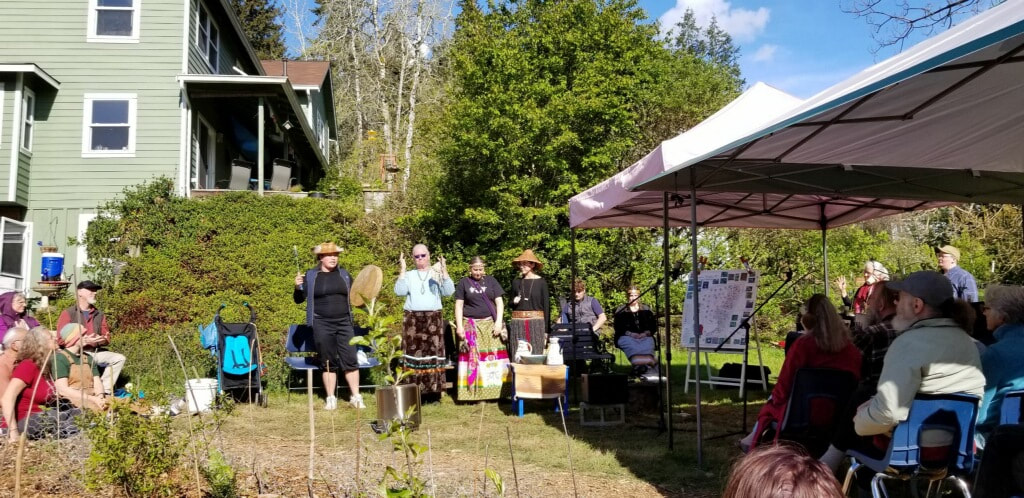· Part 1: updates on the exciting rock dust experiment
· Part 2: Spiderpalooza
· Part 3:Tiny progress on tiny farm stay
It is my pleasure to firstly reveal the groundbreaking results of our rock dust experiment. I admit, the suspense is overwhelming.
| As you recall, we were determined to demonstrate the efficacy of various rock dust concentrations on the growth of radishes. By all accounts, rock dust is an amendment that enhances plant growth. Here is the rest of our story. We planted seeds on August 10. After one week of growth, there was little noticeable difference between the control and the amended containers. After two weeks, we started noticing something unexpected. Several plants in the control group were noticeably larger, while the amended plants’ growth stagnated. “This isn’t good,” said Stacey. After three weeks, the radishes in the control group looked monstrous, while the plants amended with rock dust were puny and weak. This effect was commensurate with rock dust concentration, an indicative sign that our hypothesis was in some way flawed. “Maybe we should switch the control (label) with the highest concentrated sample,” said Jacob, “That would make more sense, and nobody would know.” |
| I was secretly alarmed by the complete disregard for scientific integrity. I figured a Socratic reply might be most productive. “Wouldn’t that defeat the point of the experiment?” I replied, “And plus, how would other scientists repeat this experiment without utter confusion?” This discussion revealed some of the most important tenets of good science. In graduate school, I learned that a good experiment is hypothesis driven. Without a hypothesis, an experiment does not have direction or purpose. However, we cannot allow our expectations (hypothesis) to cloud our judgement; its whole purpose is to be tested. Both proving and disproving a hypothesis is valuable information. We must be certain to formulate a coherent hypothesis, but must not be biased when interpreting the data. |
With that in mind, let’s get back to our experiment. Clearly, the addition of rock dust was detrimental to the radishes’ growth. Therefore, our hypothesis was not supported by the data and thus we must creatively think of alternative explanations, and of course new hypotheses to test! More data are required to determine and characterize the mechanism of this rock dusts’ effect. I’m also hopeful that other rock dust brands might instead have a beneficial effect; however, we cannot be certain unless we rigorously test them as well (let me know if you decide to do that)!
| Some interesting notes I would like to share: It is difficult to speculate why the rock dust would be harmful to plants. Perhaps this rock dust contained too much salts, which can lead to a buildup of damaging osmotic pressure. Or, it was expired rock dust (just kidding, I don't think rocks expire.) I also found it strange that the increased growth in the control group was not uniform. I also noticed that the rightmost container (highest concentration of rock dust) was not draining as efficiently as the others (although there was no noticeable effect on moisture levels later). Unfortunately, it is often impossible to control for every single variable. It is up to the scientist to think deeply about the results and come up with interpretations that fit the data and account for all possibilities! Ultimately, I cannot, in good conscience, recommend this product at this time; unless, of course, you are looking for an all-natural geological herbicide. |




 RSS Feed
RSS Feed